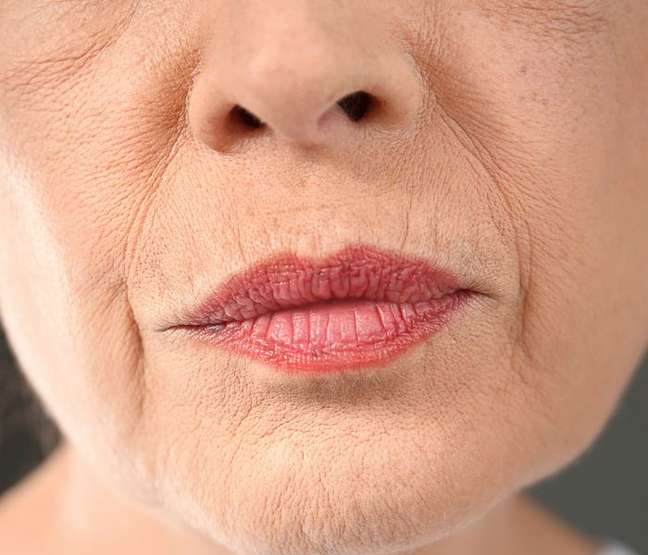Accelerated ageing, nail disease and psoriasis are three of the skin problems that arise or worsen with the act of smoking

Did you know there are dermatological conditions caused, associated with or aggravated by smoking🇧🇷 “In the field of skin health, quitting smoking is essential to slow down aging, minimize surgical and dermatological complications related to smoking and improve overall health conditions, which directly impact skin tissue” , explains the dermatologist Paola Pomerantezeff, a member of the Brazilian group Society of Dermatology.
Do you want to better understand the skin problems that cigarettes can cause or worsen for the health and beauty of your skin? Below, the doctor highlights eight of them:
Difficulty healing wounds
Cigarette smoking has been repeatedly shown to have negative effects on wound healing of the skin. “Nicotine increases platelet adhesiveness by inhibiting prostacyclin, thus leading to microvascular occlusion and tissue ischemia. Tobacco also inhibits endothelial cell and fibroblast function, nitric oxide activity, production of vascular endothelial growth and collagen synthesis, all of which have a direct impact on healing,” explains Dr. Paola.
Appearance of wrinkles and acceleration of skin aging
Smoking may also be related to the dreaded aging of the skin, see? “Clinical features of a ‘smoker’s face’ have been described in studies and include: prominent facial lines, prominence of underlying bone contours, dry, flushed skin,” says Dr. Paola.
According to the specialist, studies indicate that the women appear to be more susceptible to the wrinkling effects caused by smoking compared to men.

Nail and hair diseases
Smoking can also cause or worsen a variety of hair and nail disorders, such as androgenic alopecia, premature graying hair, smoker’s nails, and discolored facial hair. “Cigarettes fundamentally compromise blood circulation and, therefore, also oxygenation and the supply of nutrients to peripheral tissues, including skin, nails and hair. The toxic substances present in cigarettes also lead to a highly inflammatory condition, sensitizing the region that can suffer from irritation , seborrheic dermatitis, thinning, breakage and hair loss”, explains the dermatologist.
Hidradenitis suppurativa
Known as acne inversa, this skin condition also occurs more often in smokers. “Usually confused with boils or large pimples, hidradenitis suppurativa is a chronic inflammation of the skin characterized by the appearance of deep swellings and cysts in regions such as the armpits, breasts, groin, genitals and buttocks, which release purulent secretions and cause discomfort and pain .”, explains Dr. Paola Pomerantzeff.
Psoriasis
Smokers are at higher risk of developing psoriasis and have lower rates of clinical improvement with treatment. “In this common autoimmune disease, the body recognizes a normal protein in the skin as abnormal and tries to get rid of it causing the skin to peel. This results in large, thick, scaly patches that break down and bleed and can be painful and itchy,” He says. the dermatologist. The areas affected by the problem can vary, but some of the most sensitive are the scalp, face, genitals and nails.
Lupus
The development of systemic lupus erythematosus, as well as increased disease severity, has been associated with smoking. “Furthermore, cigarettes greatly influence the treatment of the disease, directly interfering with the effectiveness of drugs,” says Dr. Paola.
Dermatitis
Cigarettes are a known risk factor for allergic contact dermatitis. “Several potential cigarette allergens can be found in filters, paper and tobacco. Many reports have documented irritant and allergic contact dermatitis to the nicotine patch in some patients who have tried to quit smoking,” explains the professional.
Skin cancer
In this case, the relationship between the disease and smoking remains controversial, despite the presence of several carcinogens in tobacco smoke. “There appears to be a correlation between packs per day and years of smoking with the development of squamous cell carcinoma, particularly in women. However, more studies are needed to evaluate the role of smoking in the development of skin cancer. What is known ?is that a lack of skin cell nutrition can damage your immunity, which makes it more susceptible to environmental damage from the sun,” explains the doctor.
But either way, quitting smoking will help and improve a variety of skin conditions, according to Dr. Paola.
Source: Dr. Paola Pomerantezeff, dermatologist and member of the Brazilian Society of Dermatology.
🇧🇷The best content in your email for free. Choose your favorite Terra newsletter. Click here!
Source: Terra
Ben Stock is a lifestyle journalist and author at Gossipify. He writes about topics such as health, wellness, travel, food and home decor. He provides practical advice and inspiration to improve well-being, keeps readers up to date with latest lifestyle news and trends, known for his engaging writing style, in-depth analysis and unique perspectives.







